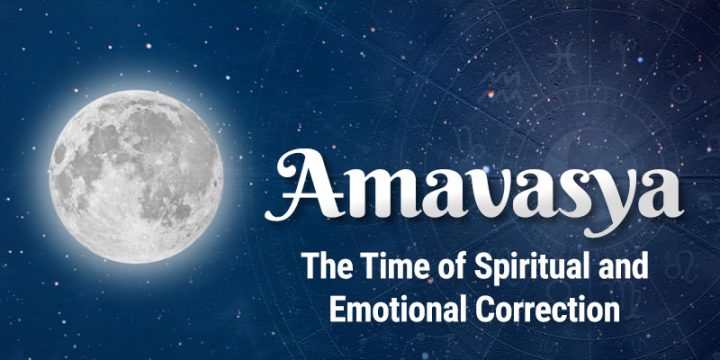Contents[hide]
Amavasya in 2025 List
The Amavasya 2025 dates are as follows:- January 28, 7:36 pm – January 29, 6:05 pm
- February 27, 8:55 am – February 28, 6:14 am
- March 28, 7:55 pm – March 29, 4:27 pm
- April 27, 4:50 am – April 28, 1:01 am
- May 26, 12:12 pm – May 27, 8:32 am
- June 24, 7:00 pm – June 25, 4:01 pm
- July 24, 2:29 am – July 25, 12:41 am
- August 22, 11:56 am – August 23, 11:36 am
- September 21, 12:17 am – September 22, 1:24 am
- October 20, 3:45 pm – October 21, 5:55 pm
- November 19, 9:44 am – November 20, 12:17 pm
- December 19, 4:59 am – December 20, 7:13 am
Which Amavasya is Today?
 Ideally, there should be 12 Amavasyas a year, though it tends to be 13 in some years. Each of them is named after the month it falls on and has its significance.
Ideally, there should be 12 Amavasyas a year, though it tends to be 13 in some years. Each of them is named after the month it falls on and has its significance.
Pausha Amavasya ( December 19)
Pausha Amavasya falls in the month of Paush. It is considered inauspicious as negative energies are predominant during this time. Worshipping Goddess Lakshmi during this Amavasya is considered beneficial. Individuals who have Pitra Dosha in their chart would do well to observe Shradh during this time. Observing proper spiritual practices during this time can eliminate deadly diseases and premature death. It can bestow prosperity and the blessing of forefathers on the person.Magha Amavasya (January 29)
It is also known as the Mauni Amavasya. Mauna Vrat is observed during this vrat. In this fast, complete silence is maintained for the duration of Amavasya. The person is supposed to get in touch with his inner self during this time. It is a good way to attain spiritual growth and become more aware of one’s metaphysical senses. Taking a dip in holy rivers is also recommended.Phalguna Amavasya (February 27)
This is an inauspicious Amavasya, where negative forces dominate the positive ones. This is a good time to perform Shradh and Tarpan and pay respects to the forefathers. It is believed that one’s deceased ancestors visit Earth on Amavasya. If proper respect is not paid to them, they will be disappointed.Chaitra Amavasya (March 29)
Chaitra being the first month of the Hindu calendar, the Chaitra Amavasya is seen as an occasion for spiritual healing. Observing the Chaitra Amavasya vrat helps the person get rid of past and present sins and also gain the blessings of the forefathers. Performing shraddha on Amavasya is believed to make the residence of the souls of the forefathers in Pitru Loka as they await the next birth a pleasant one.Vaishakha Amavasya (April 27)
Vaishakha Amavasya is also known as Shani Jayanti in some states. Shani or Saturn is believed to have been born on this day. Saturn is the planet of karma. It is believed that this is the day when the souls of our forefathers come closest to us. It is up to us to relieve them from the restrictions of this world and allow them to enter wider worlds. This can be achieved by performing Pind Daan.Jyeshtha Amavasya (May 27)
Negative energies are too powerful during the Jyeshtha Amavasya. It is generally regarded as an unfortunate day. Any business or journey that begins during this time will fail. Devotees generally avoid doing anything significant during this time. But it is auspicious for performing tantric pujas, black magic, and kaal sarpa dosha pooja.Ashadha Amavasya (June 25)
Ashadha Amavasya is considered an auspicious time. Tila Tarpanam, or offering to the dead, and Annadanam, or feeding the poor, are done during this time. It is customary to light diyas and lamps in houses to mark the occasion.Shravana Amavasya (July 24)
Shravana is regarded as a holy month in Hindu culture. This is celebrated in different names across India. Along with the worship of ancestors, this Amavasya also sees the worship of nature and that of Lord Shiva. Traditionally, the month of Shravan heralds the arrival of the monsoon, hence the worship of nature. Lord Shiva is worshipped to ensure wealth, health, and good fortune. In some parts of the country, grand fairs are held as part of observing Shravan Amavasya.Maha Shivratri: The Great Night of Shiva
Bhadrapada Amavasya (August 23)
Praying on the eve of Bhadrapada Amavasya is believed to free the person from past sins and malicious thoughts. People observe vrat to keep disturbances away and let peace reign at home. Natives suffering from Kaal Sarpa Dosha can put an end to the miseries caused due to it by performing puja on this Amavasya.Ashwina Amavasya (September 21)
This signifies the beginning of the celebration of Durga Puja. Observing shraddha rituals and tarpan during this time helps the person attain the blessings of Lord Yama while also helping the souls of his forefathers attain moksha. It also blesses the children of the person with long life and prosperity.Kartika Amavasya (October 21)
This is celebrated all over the world as Diwali. It is believed Lord Rama returned from the 14-year exile after vanquishing Lord Ravana on this day, and hence Kartika Amavasya represents the victory of good over evil. It is also believed that Goddess Lakshmi emerged from Samudra Manthan on this day. Hence this is also known as Kamala Jayanti.Margashirsha Amavasya (November 20)
Lord Krishna is worshipped on this Amavasya. This is considered an auspicious time, and every activity one does during this time will have deep significance in life. Donating money or other things along with paying respect to forefathers brings peace and prosperity to the person.Get Your Detailed Horoscope







